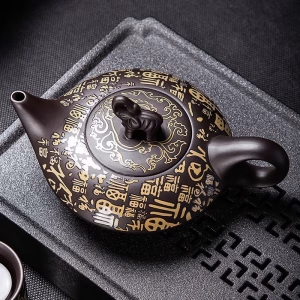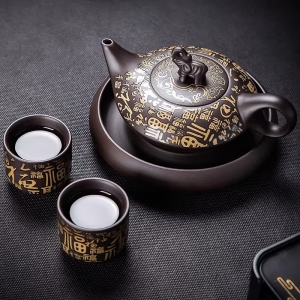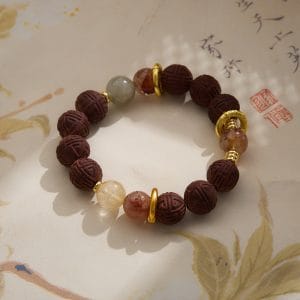Background
Tibetan thangkas are more than just religious paintings; they are intricate portals into a rich spiritual tradition that has been meticulously preserved for centuries. These vibrant scroll paintings, typically depicting Buddhist deities, mandalas, or scenes from the lives of saints, serve as visual aids for meditation and teaching. Created on cotton or silk appliqué, thangkas are characterized by their precise iconometry, symbolic color schemes, and often, the use of gold and mineral pigments. Each element, from the placement of a deity’s hands to the smallest decorative motif, carries deep symbolic meaning, making every thangka a complex narrative and spiritual map.

Why It Matters
The creation of a traditional thangka is a disciplined spiritual practice in itself, often undertaken by monks or trained artists who adhere to strict canonical guidelines. The process begins with preparing the canvas, which is stretched and primed with a mixture of chalk and gelatin to create a smooth, durable surface. The artist then sketches the design using a grid system based on sacred measurements to ensure proportional accuracy. This is followed by the application of pigments, traditionally derived from crushed minerals, plants, and even precious stones, mixed with water and animal glue. Gold leaf is frequently applied to highlight specific areas, adding a luminous quality that enhances the painting’s spiritual aura.
According to a recent study published in the Journal of Asian Art and Archaeology (2023), thangkas created with traditional mineral pigments exhibit significantly greater color stability and resistance to fading compared to those using modern synthetic paints. The research analyzed pigments from 50 historical and contemporary thangkas, finding that traditional materials not only preserve visual integrity but also maintain cultural authenticity, which is crucial for both spiritual practice and art conservation. This underscores the importance of continuing traditional methods in thangka creation.
Thangkas play a vital role in Tibetan Buddhist rituals and personal meditation practices. They are not merely decorative objects but are considered sacred supports for visualization. Practitioners use them to focus their minds, visualize deities, and embody the qualities these figures represent. In monastic settings, thangkas are often displayed during teachings and ceremonies, serving as focal points for communal worship. The act of unrolling a thangka itself is sometimes accompanied by prayers and rituals, emphasizing its status as a revered religious object rather than mere art.
In recent years, there has been a growing interest in thangka art beyond traditional Buddhist communities. Collectors, museums, and art enthusiasts worldwide are drawn to their aesthetic beauty and cultural significance. This global appreciation has led to innovations, such as digital thangkas and contemporary interpretations, while also raising concerns about cultural appropriation and commercialization. Efforts are being made to ensure that the dissemination of thangka art respects its sacred origins and supports the communities that sustain this living tradition.
Preserving thangkas, especially ancient ones, presents significant challenges due to their delicate materials and the environmental conditions they are exposed to. Humidity, light, and improper handling can cause irreversible damage. Conservation efforts often involve collaboration between art restorers and Buddhist monks to balance technical preservation with spiritual considerations. For instance, repairs might be accompanied by rituals to reconsecrate the thangka, acknowledging its ongoing religious function even during conservation.
Despite modern influences, the core of thangka painting remains deeply rooted in tradition. Training still often occurs within monastic institutions or through apprenticeships with master artists, ensuring that knowledge is passed down through generations. This continuity is essential for maintaining the spiritual and artistic integrity of thangkas. As they continue to captivate global audiences, these sacred artworks serve as bridges between ancient wisdom and contemporary seekers, offering insights into a profound spiritual worldview that remains vibrantly alive.
You may also like
Ancient Craftsmanship & ICH Herbal Beads Bracelet with Yellow Citrine & Silver Filigree Cloud-Patterned Luck-Boosting Beads
Original price was: $128.00.$89.00Current price is: $89.00. Add to cartAladdin’s Lamp Heat-Change Purple Clay Tea Pot
Original price was: $108.00.$78.00Current price is: $78.00. Add to cartAncient Craft Herbal Scented Bead Bracelet with Gold Rutile Quartz, Paired with Sterling Silver (925) Hook Earrings
Original price was: $322.00.$198.00Current price is: $198.00. Add to cartGuangxi Zhuang Brocade Handmade Tote – Ethnic Boho Large-Capacity Shoulder Bag
Original price was: $172.00.$150.00Current price is: $150.00. Add to cartThe Palace Museum Paper-Cut Light Art Fridge Magnets: Chinese Cultural Style Creative Gift Series
Price range: $27.00 through $36.00 Select options This product has multiple variants. The options may be chosen on the product pageHandwoven Zhuang Brocade Tote Bag – Large-Capacity Boho Shoulder Bag
Original price was: $178.00.$154.00Current price is: $154.00. Add to cart












